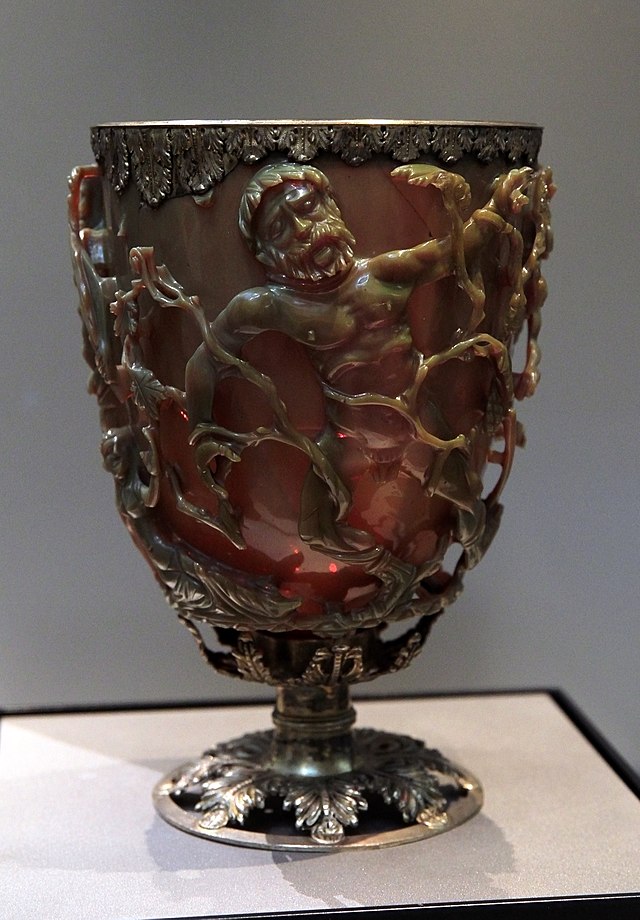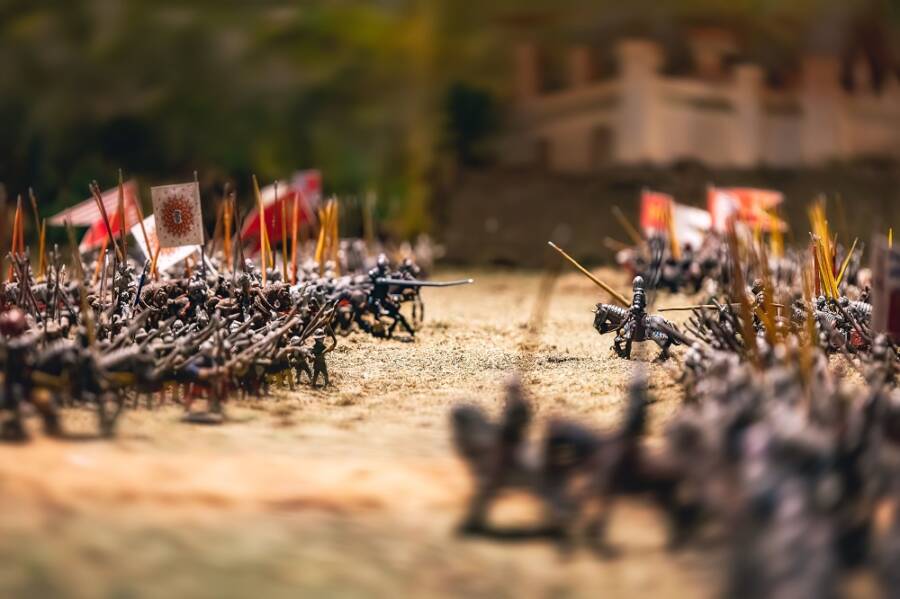Some ancient technologies will always remain a mystery!
Honestly, I will never get enough of history. It’s always fascinating to discover new things while I do my research for these articles. And what can I tell you? It’s amazing. But much nicer is that I have the opportunity to share them with you, my favorite readers.
In this article, we will explore the enigmatic world of ancient technologies in greater detail. After extensive research on extinct technologies and artifacts, there is evidence suggesting that human evolution may not have followed a strictly linear path. Even with all of our current knowledge and technology, early civilizations have made several discoveries and created methods that we are now unable to fully duplicate.
I bet you’re curious, so why waste time on long introductions when we can dive straight into exploring one of the most fascinating ancient technologies? Let’s get started!

1. The Pyramids of Giza
Now, this is probably among the best ancient technologies, but it is also a mystery at the same time. Even after thousands of years, the Great Pyramids continue to puzzle people across the world, and no one has ever been able to definitively establish how they were built.
Each of the millions of stone blocks that make up the buildings weighs tens or hundreds of tons. Numerous ideas have been proposed by scholars to explain how the ancient Egyptians transported, shaped, and arranged these stones. We could fill countless pages with the questions we have about the pyramids that have never been answered.
Do you think aliens have helped with the building of the pyramids of Giza? Tell me in the comments.
2. Flexible glass
One of the second ancient technologies I chose to present is flexible glass. While there is very little information about it out there, I found out that it was invented during the time of Tiberius Caesar in the Roman Empire, even though very little of it can be proven.
These tales tell of a glassmaker who brought a glass vessel to the Emperor for inspection; the nature of the vessel differs across the accounts. When he gave it back to the maker, he immediately let it fall to the floor. Instead of breaking it into bits, the glassmaker reveals to the Emperor a small scratch in the glass after picking it up gently.
The glassmaker then went on to hammer it back into form, and it seemed as though his creation was intact. You would think that this amazing invention would be appreciated because it is actually one of the best ancient technologies, but the Emperor killed the unfortunate glassmaker, and he made sure that no one else knew the recipe for “vitreum flexible” out of fear that this new substance would make gold, silver, and other expensive metals worthless.
3. Nepenthe
The ancient Greeks and Egyptians utilized nepenthe, a medicine, to relieve pain and provide enjoyment. That era’s mythology and history both make specific mention of the medicine by name, which means “that which chases away sorrow,” or more accurately, “anti-sorrow.”
Nepenthe was an opioid or an antidepressant of some kind, but historians are uncertain about which one or even if we know about it. According to some, nepenthe originated in Egypt, and because of its effects, many have compared it to opium or laudanum, calling it “a drug of forgetfulness.” This plant may still exist today, but as science hasn’t yet discovered a contemporary counterpart, the existence of this one is still unknown.
4. The Antikythera mechanism
The Antikythera Mechanism, a bronze contraption found by divers off the shore of the Greek island of Antikythera in the early 1900s, is one of the most mysterious objects in history. The device may be used to plot the cosmic positions of the moon, sun, and other planets in the universe thanks to its more than thirty gears, cranks, and dials. It has been determined that the device dates to the first or second century BC.
Although the actual function of this machine is unknown, much speculation has been generated over the years due to its complex and sophisticated design. It’s interesting to point out that the chances of replicating another one, even with the technology we have nowadays, are almost impossible.
…psst! I just found a super interesting book about Egyptian mythology that is super interesting to read. I purchased mine for just $4.19 from Amazon. I am not saying you should buy it but Egyptian Mythology: An Enthralling Overview of Egyptian Myths, Gods, and Goddesses it can be a nice addition to your collection if you’re passionate about history like me.
If you decide to buy it drop a comment after you read it and tell me how was the experience.
5. Oxford Electric Bell
Compared to all these ancient technologies mentioned above, if scientists put in the effort most probably they would discover how the Oxford Electric Bell operated. The issue is that doing so would mean calling off the Bell experiment, which has been going on for 181 years and doesn’t seem to be ending. Since 1840, the Bell has been ringing.
This swinging instrument was built by the London-based company Watkins and Hill and is powered by two dry-pile batteries. Such antiquated batteries ought to have died long ago, yet Bell’s batteries’ special formula has allowed them to continue operating for a very long time. How? We will never know. It’s a mystery!
Even though researchers are eager to determine that composition, the Bell experiment is among the world’s longest-running projects, and it would be too costly to terminate it early. Maybe our grandkids will be able to find the truth…
6. Greek fire
Oh, how much I love Greeks! For their inventions and the super-advanced technology, especially for that time. And let’s not forget their beautiful country! Greek fire, for example, is an intriguing “item” of ancient technology since it sounds amazing and is genuine, yet its exact makeup is still unknown. The Byzantine Empire was the main user of this ancient weapon from the 600s to the 1200s.
It was made out of a pipe that was fixed to Byzantine ships and sprayed enemy vehicles with a dense, gel-like fire. Its existence is confirmed by dozens of quite trustworthy sources, but by the 1300s, there were no more mentions of the weapon. We don’t know for sure, but according to speculation, the Greek fire recipe was lost mostly because of the empire’s decay.
Furthermore, the majority of specialists think it was perhaps partly comparable to current napalm because of its persistent burning on the water’s surface and difficulties extinguishing it.
7. Mithridate
In honor of King Mithridates VI, mithridatium was purported to be a “universal antidote” to all poisons. The precise mixture, which has been lost to time, is said by historians to have contained chopped vipers, opium, and trace amounts of poisons and their counteragents.
Developed in 100 B.C., the antidote was used for several years, mostly in France and Italy, and for a long time it lived under the name “theriac.” The formula for this miraculous countermeasure remains unknown today but attempts to replicate it as late as the 1990s are reported to have occurred.

8. Lycurgus cup
The magnificent Lycurgus cup from the fourth century would be remarkable even without anything else because of the elaborate artistic glass cage that encircles it and portrays a scenario from King Lycurgus’ mythology.
Although the Lycurgus cup appears beautiful on the outside, its fundamental composition is a true antique marvel that confuses even contemporary historians. The dichroic glass of the cup appears green when lit from the front and red when lit from the back.
Very few other examples of this phenomenon from the era exist, and none of them have a color difference that is noticeable, comprehensive, or vast. This is because the method for producing that dichroic effect necessitates the careful and controlled manipulation of nanoparticles made of gold and silver. The unsatisfactory conclusion that the dichroism was probably generated accidentally remains with archaeologists because nanotechnology was probably unknown to the Romans, as we first learned about it in the 1970s.
What other ancient technologies do you know that I haven’t mentioned in the article? Feel free to open a discussion in the comments section.
You may also like 7 Shocking Things About Hygiene in Ancient Egypt.






3 Responses
as to heavy stones, The Romans moved several stones used in a monument base that weighed a million pounds each. There is one believed to weigh about 2 million pounds set to the side in a quarry, and no one knows how they did it. As to flexible glass, Some was demonstrated in the seventies with a coil spring that could be used in auto’s. It fell to the side as other materials were better at the job. It however was discovered that it works great for submersible sphere’s. Geek fire was shown years ago to by fueled by crude oil from natural sources and has been replicated and demonstrated on television. The Antacathera device uses differential gearing that was thought to only exist in the late 1800’s. The gearing has been shown to take in the moons orbit and planet orbit variations and is indeed a mechanical work of genius. The analog computers of the early 40’s for gun aiming on ships is likely the closest to that we have built before electronics took over.
What is the oldest provable historic event? When did Neanderthals die out?